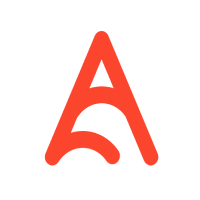-
 Bitcoin
Bitcoin $84,047.1565
-1.20% -
 Ethereum
Ethereum $1,605.9595
-2.12% -
 Tether USDt
Tether USDt $0.9998
0.02% -
 XRP
XRP $2.1251
-1.75% -
 BNB
BNB $583.5719
-0.68% -
 Solana
Solana $127.8858
-3.01% -
 USDC
USDC $0.9998
0.02% -
 TRON
TRON $0.2507
-0.76% -
 Dogecoin
Dogecoin $0.1552
-3.54% -
 Cardano
Cardano $0.6191
-3.67% -
 UNUS SED LEO
UNUS SED LEO $9.3580
-0.19% -
 Chainlink
Chainlink $12.3682
-4.38% -
 Avalanche
Avalanche $19.3567
-5.12% -
 Toncoin
Toncoin $2.9447
3.18% -
 Stellar
Stellar $0.2382
-1.00% -
 Shiba Inu
Shiba Inu $0.0...01181
-2.55% -
 Sui
Sui $2.1218
-4.52% -
 Hedera
Hedera $0.1592
-5.28% -
 Bitcoin Cash
Bitcoin Cash $324.3417
-0.89% -
 Litecoin
Litecoin $75.1603
-2.94% -
 Polkadot
Polkadot $3.5920
-4.19% -
 Dai
Dai $1.0000
0.01% -
 Bitget Token
Bitget Token $4.2905
0.07% -
 Hyperliquid
Hyperliquid $15.1958
-4.65% -
 Ethena USDe
Ethena USDe $0.9991
0.01% -
 Pi
Pi $0.6617
-10.84% -
 Monero
Monero $214.4416
0.09% -
 Uniswap
Uniswap $5.2266
-4.06% -
 OKB
OKB $51.1172
-3.48% -
 Pepe
Pepe $0.0...07002
-6.15%
How are Binance transaction fees calculated?
The transaction fee for Binance is determined by a tier-based system, which takes into account the trading volume within a 30-day period and the user's VIP level.
Feb 21, 2025 at 12:40 pm
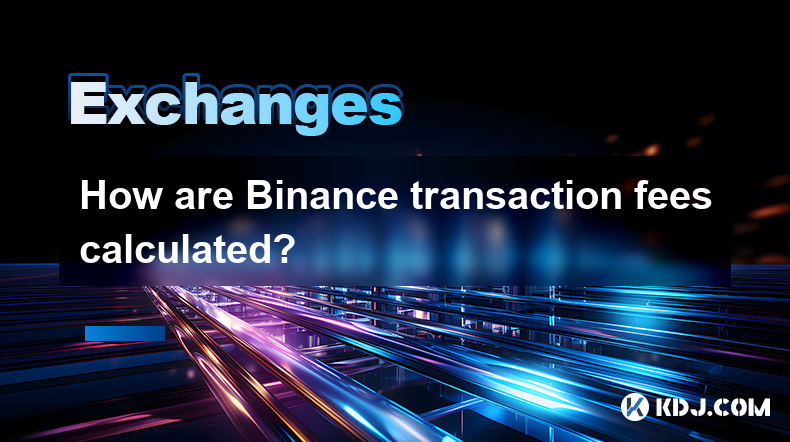
How is the Transaction Fee of Binance Calculated?
Spot Trading Fees
Binance's spot trading fees are determined by a tier - based system. This system takes into account two main factors: the trading volume within a 30 - day period and the user's VIP level.
For the trading volume aspect, as the total trading volume in a 30 - day cycle increases, the trading fee rate generally decreases. For example, if your 30 - day trading volume is relatively low, you might be in a higher - fee tier.
VIP levels also play a significant role. Higher VIP levels are often associated with lower trading fees. These VIP levels are usually achieved through meeting certain trading volume requirements over time.
The fee for spot trading is calculated based on the trading pair. For instance, when trading BTC/USDT, if the trading fee rate is 0.1% and you trade \(1000 worth of BTC, the fee would be \)1000 * 0.1% = $1.
Margin Trading Fees
Margin trading on Binance has its own fee structure. In addition to the normal trading fees similar to spot trading, there are also interest charges for borrowing funds.
The interest rate for borrowing funds in margin trading depends on several factors. One of the key factors is the cryptocurrency being borrowed. Different cryptocurrencies have different borrowing interest rates.
For example, if you borrow Bitcoin for margin trading, the interest rate might be different from borrowing Ethereum. These interest rates can also change over time based on market conditions and Binance's internal policies.
The trading fee in margin trading is calculated in a way similar to spot trading. It is based on the trading volume and the applicable fee rate. If the trading fee rate is 0.12% and you execute a margin trade worth \(2000, the trading fee would be \)2000 * 0.12% = $2.4.
Futures Trading Fees
Futures trading fees on Binance are also calculated based on a tier - based system. However, the factors considered are different from spot trading.
In futures trading, the fee rate is influenced by the trading volume in futures contracts over a specific period, usually 30 days. Higher trading volumes in futures contracts can lead to lower fee rates.
Another important factor is the type of futures contract. For example, the fee rate for perpetual futures contracts may be different from that of quarterly futures contracts.
Let's say the fee rate for a particular perpetual futures contract is 0.04% and you make a futures trade with a contract value of \(5000. The trading fee would be \)5000 * 0.04% = $2.
BNB - Discounted Fees
Binance offers a unique feature of fee discounts when using BNB (Binance Coin) to pay for trading fees.
When you choose to pay your trading fees with BNB, you can enjoy a certain percentage of discount. This discount rate also varies depending on your trading volume and VIP level.
For example, a regular user might get a 25% discount when paying with BNB. If the normal trading fee for a spot trade is \(10, with the BNB - payment discount, the actual fee paid would be \)10 * (1 - 25%) = $7.5.
The more trading volume you have and the higher your VIP level, the more significant the discount can be. This makes using BNB for fee payment an attractive option for many active traders on Binance.
Maker - Taker Fee Model
Binance follows a maker - taker fee model. Makers are the ones who add liquidity to the market by placing limit orders that do not immediately match existing orders. Takers are the ones who remove liquidity by placing market orders or limit orders that immediately match existing orders.
Generally, maker fees are lower than taker fees. For example, in spot trading, the maker fee rate might be 0.02% while the taker fee rate could be 0.07%.
This fee model encourages users to provide liquidity to the market. If you place a limit order that becomes a maker order and later gets executed, you will be charged the lower maker fee.
When calculating the fee based on the maker - taker model, it is crucial to determine whether your order is a maker or a taker order. If you place a market order to buy Bitcoin, which immediately matches an existing sell order, you are a taker and will be charged the taker fee rate.
Fee Calculation for Different Order Types
Market orders: The fee for a market order is calculated based on the total value of the assets being traded at the time of execution. For example, if you place a market order to buy \(3000 worth of Ethereum, and the taker fee rate is 0.07%, the fee would be \)3000 * 0.07% = $2.1.
Limit orders: For limit orders, if it becomes a maker order (not immediately filled), the maker fee rate applies. Suppose you place a limit order to sell Litecoin, and it remains unfilled for a while, adding liquidity to the market. When it is finally executed, if the maker fee rate is 0.02%, and the value of the Litecoin sold is \(1500, the fee would be \)1500 * 0.02% = $0.3.
Stop - loss orders: A stop - loss order is a type of conditional order. When it is triggered and becomes a market or limit order for execution, the fee is calculated according to the type of order it becomes. If a stop - loss order is triggered and becomes a market order to sell Bitcoin, the taker fee rate will be applied based on the value of the Bitcoin sold.
Withdrawal Fees
Binance has withdrawal fees for different cryptocurrencies. These fees are designed to cover the costs associated with network transactions when withdrawing funds from the platform.
The withdrawal fee for each cryptocurrency is different. For example, the withdrawal fee for Bitcoin is relatively high compared to some other altcoins. This is because Bitcoin transactions on the blockchain have higher costs due to its network congestion and block size limitations.
The withdrawal fee for Ethereum might be different. It is usually determined by the current gas price on the Ethereum network. As the gas price fluctuates, the Ethereum withdrawal fee on Binance can also change.
Some less - popular cryptocurrencies may have lower withdrawal fees, but this can also vary based on their respective blockchain network conditions. For example, if a particular altcoin has a very low - cost blockchain network, the withdrawal fee on Binance for that coin may be relatively minimal.
Deposit Fees
In most cases, Binance does not charge deposit fees for deposits made using cryptocurrencies. When you deposit Bitcoin, Ethereum, or other supported cryptocurrencies into your Binance account, you do not need to pay an additional fee for the deposit process.
However, for deposits made using fiat currencies, there may be fees involved. The fees for fiat currency deposits depend on the payment method used. For example, if you deposit funds using a bank transfer, there may be a fixed fee or a percentage - based fee charged by Binance or the bank.
Credit card deposits usually have higher fees compared to bank transfers. The fee for a credit card deposit could be around 3 - 5% of the deposit amount. This is due to the processing fees charged by credit card companies and the associated risks for Binance in handling credit card transactions.
Factors Affecting Fee Rates
Trading volume: As mentioned before, trading volume is a crucial factor. Higher trading volumes can lead to lower fee rates in most trading scenarios on Binance, whether it's spot trading, margin trading, or futures trading.
VIP level: Your VIP level on Binance determines the fee tier you are in. Achieving a higher VIP level through consistent trading volume over time can result in significant fee savings.
Market conditions: In some cases, market conditions can also affect fee rates. For example, during periods of high market volatility, Binance may adjust the fee rates for certain trading products to manage risk and ensure the stability of the platform.
Type of cryptocurrency: Different cryptocurrencies have different fee structures. Some cryptocurrencies with more complex or costly blockchain operations may have higher trading or withdrawal fees on Binance.
How to Check Your Fees on Binance
Log in to your Binance account.
Navigate to the "Account" section, usually located at the top - right corner of the platform interface.
In the account section, look for options like "Transaction History" or "Fees".
Click on the relevant option, and you can view detailed information about the fees you have paid for different types of transactions, including spot trades, margin trades, futures trades, withdrawals, and deposits.
You can also filter the transaction history by date range, transaction type, and other criteria to get a more specific view of your fee payments.
Disclaimer:info@kdj.com
The information provided is not trading advice. kdj.com does not assume any responsibility for any investments made based on the information provided in this article. Cryptocurrencies are highly volatile and it is highly recommended that you invest with caution after thorough research!
If you believe that the content used on this website infringes your copyright, please contact us immediately (info@kdj.com) and we will delete it promptly.
- As strength returns to the cryptocurrency market, many investors are on the hunt for the best altcoin to buy now.
- 2025-04-16 03:00:18
- ZK Token Plummets 17% After Hacker Steals $5M From Airdrop Contract
- 2025-04-16 03:00:18
- An Attacker Minted 111 Million ZK Tokens Today
- 2025-04-16 03:00:17
- Kyrgyzstan Strengthens Its Position as a Regional Cryptocurrency Hub
- 2025-04-16 03:00:17
- ZKsync Confirms Exploit Targeting Unclaimed Airdrop Tokens Enabled an Unauthorized Actor to Drain Approximately $5 Million
- 2025-04-16 03:00:15
- Web3AI ($WAI) — The AI-Driven Crypto Ecosystem Everyone's Talking About
- 2025-04-16 03:00:15
Related knowledge

How do I contact customer service on Binance to resolve issues?
Mar 16,2025 at 04:30am
Key Points:Binance's customer service is primarily self-service, relying heavily on its help center and FAQs.Direct contact methods are limited, with email support being the most common route for non-urgent issues.Urgent issues may require using the in-app support system, though response times can vary.Understanding Binance's support structure and utili...
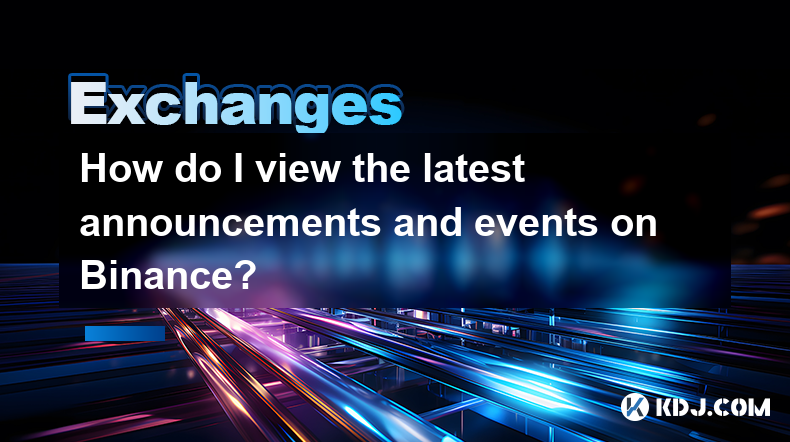
How do I view the latest announcements and events on Binance?
Mar 18,2025 at 10:18pm
Key Points:Binance utilizes multiple channels for disseminating announcements and events.The official Binance website is the primary source.Binance's social media platforms offer timely updates.Email subscriptions keep users informed about relevant announcements.Third-party aggregators can supplement official channels but require caution.How Do I View t...

How do I set up a subaccount on Binance?
Mar 14,2025 at 01:50pm
Key Points:Binance does not offer traditional "subaccounts" in the sense of separate accounts with independent logins under a master account.Instead, Binance offers features like user-defined labels for better portfolio management and API keys for automated trading. These provide functionality similar to subaccounts.Setting up these features involves na...
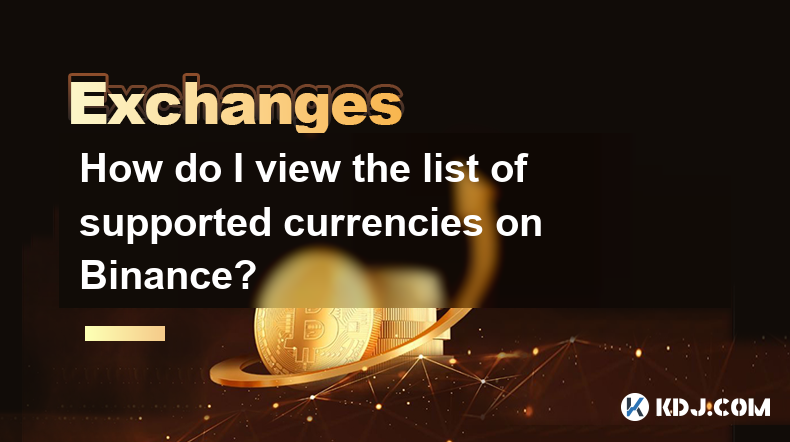
How do I view the list of supported currencies on Binance?
Mar 15,2025 at 05:35am
Key Points:Binance supports a vast and frequently updated list of cryptocurrencies. There's no single, static list.Finding supported currencies requires navigating Binance's website or app interfaces.Different sections of the exchange show different subsets of supported currencies (e.g., trading, staking, etc.).The availability of specific cryptocurrenc...
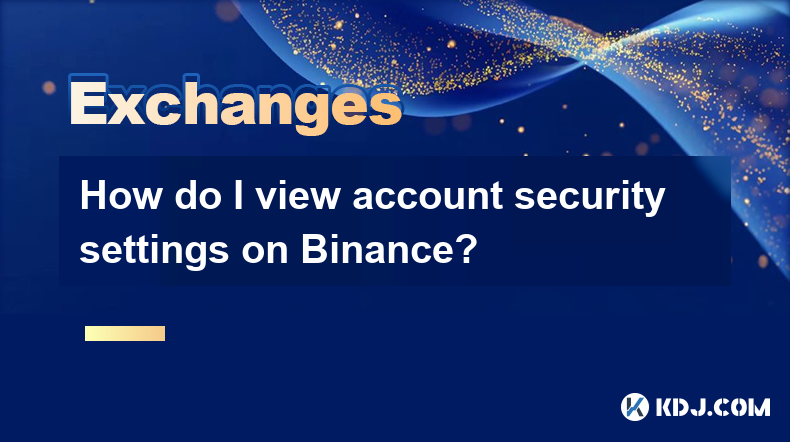
How do I view account security settings on Binance?
Mar 15,2025 at 08:40pm
Key Points:Binance's security settings are spread across multiple sections of your account. This article will guide you through each crucial area.Understanding and implementing these settings is paramount to protecting your cryptocurrency assets.We'll cover two-factor authentication (2FA), withdrawal whitelists, and other essential security features.Reg...
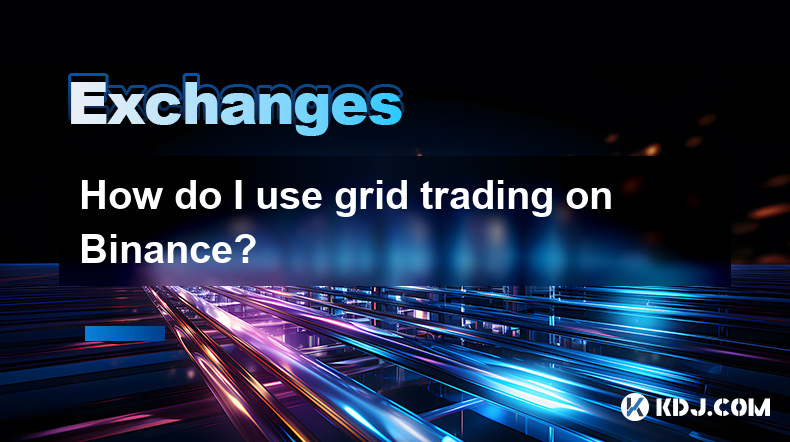
How do I use grid trading on Binance?
Mar 14,2025 at 04:25pm
Key Points:Grid trading on Binance involves automatically buying low and selling high within a defined price range.Binance offers a built-in grid trading bot, simplifying the process.Setting up a grid bot requires defining parameters like price range, grid quantity, and investment amount.Risk management is crucial, as losses are possible despite the aut...

How do I contact customer service on Binance to resolve issues?
Mar 16,2025 at 04:30am
Key Points:Binance's customer service is primarily self-service, relying heavily on its help center and FAQs.Direct contact methods are limited, with email support being the most common route for non-urgent issues.Urgent issues may require using the in-app support system, though response times can vary.Understanding Binance's support structure and utili...

How do I view the latest announcements and events on Binance?
Mar 18,2025 at 10:18pm
Key Points:Binance utilizes multiple channels for disseminating announcements and events.The official Binance website is the primary source.Binance's social media platforms offer timely updates.Email subscriptions keep users informed about relevant announcements.Third-party aggregators can supplement official channels but require caution.How Do I View t...

How do I set up a subaccount on Binance?
Mar 14,2025 at 01:50pm
Key Points:Binance does not offer traditional "subaccounts" in the sense of separate accounts with independent logins under a master account.Instead, Binance offers features like user-defined labels for better portfolio management and API keys for automated trading. These provide functionality similar to subaccounts.Setting up these features involves na...

How do I view the list of supported currencies on Binance?
Mar 15,2025 at 05:35am
Key Points:Binance supports a vast and frequently updated list of cryptocurrencies. There's no single, static list.Finding supported currencies requires navigating Binance's website or app interfaces.Different sections of the exchange show different subsets of supported currencies (e.g., trading, staking, etc.).The availability of specific cryptocurrenc...

How do I view account security settings on Binance?
Mar 15,2025 at 08:40pm
Key Points:Binance's security settings are spread across multiple sections of your account. This article will guide you through each crucial area.Understanding and implementing these settings is paramount to protecting your cryptocurrency assets.We'll cover two-factor authentication (2FA), withdrawal whitelists, and other essential security features.Reg...

How do I use grid trading on Binance?
Mar 14,2025 at 04:25pm
Key Points:Grid trading on Binance involves automatically buying low and selling high within a defined price range.Binance offers a built-in grid trading bot, simplifying the process.Setting up a grid bot requires defining parameters like price range, grid quantity, and investment amount.Risk management is crucial, as losses are possible despite the aut...
See all articles



















































































